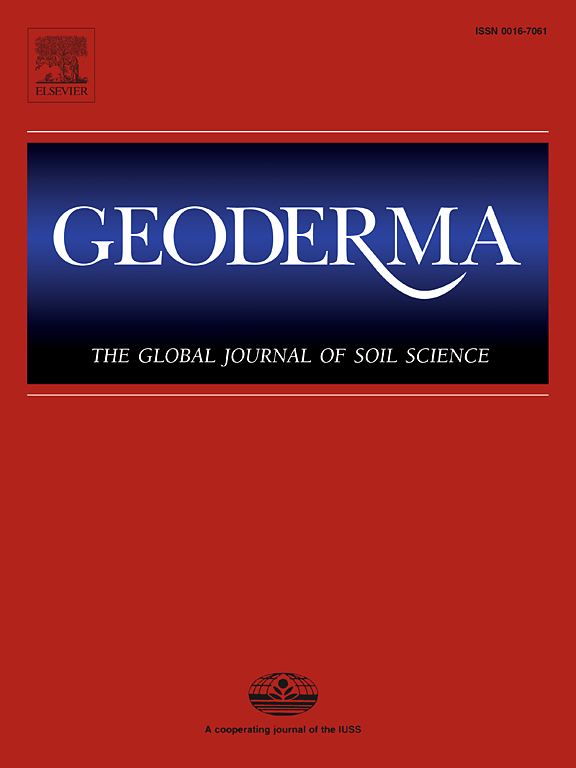Phytate efficiency as a phosphorus source for wheat varies with soil properties
IF 5.6
1区 农林科学
Q1 SOIL SCIENCE
引用次数: 0
Abstract
Aims
Phytate, the most abundant organic P compound in soils, cannot be used as a P source by plants without first being hydrolyzed. However, the effect of soil properties on its effect as a P source to plants is not yet well understood. This study aimed to assess the efficiency of phytate as a P source for plants depending on soil properties.
Methods
Eight soils ranging widely in properties were selected and used in an incubation experiment for 100 days with phytate or soluble inorganic P, both at the same rate of 27 and 80 mg P kg−1; after this incubation period, wheat was grown on these soils.
Results
Phytate was as efficient as inorganic P in increasing Olsen P after incubation. This efficiency (i.e. increase in Olsen P to applied P ratio) of phytate decreased with increasing clay and poorly crystalline Fe oxides content in soils. Phytate increased P uptake by plants relative to the non-fertilized control. Phosphorus uptake from phytate and its equivalence with soluble inorganic fertilizer in terms of crop P uptake (MFRV) varied between soils and decreased with increasing clay content. Thus, soil components involved in the sorption of phytate contribute to a decrease in its efficiency as a P source for plants. Phosphorus uptake from phytate and its MFRV increased with increasing phytase activity and Gram + to Gram − bacteria ratios. Thus, the hydrolytic activity and the composition of bacterial communities of soils affects its use as a P source by plants. Therefore, phytate present in organic residues and soils can be a source of P for wheat, whose availability to plants depends on physico-chemical, biochemical, and biological soil properties.
植酸作为小麦磷源的效率因土壤性质而异
摘要膦酸盐是土壤中磷含量最高的有机化合物,不经水解就不能作为植物的磷源。然而,土壤性质对其作为植物磷源的影响尚不清楚。本研究旨在评估植酸盐作为植物磷源的效率取决于土壤性质。方法选择8种性质各异的土壤,分别以27和80 mg P kg−1的植酸磷或可溶性无机磷进行100天的培养试验;经过这段潜伏期后,小麦在这些土壤上生长。结果培养后,膦酸盐与无机磷具有相同的提高奥尔森磷的作用。植酸盐的效率(即奥尔森磷与施磷比的增加)随着土壤中粘土含量的增加和铁氧化物结晶性差而降低。与未施肥对照相比,植酸增加了植株对磷的吸收。植酸对磷的吸收及其与可溶性无机肥料在作物磷素吸收方面的等效性(MFRV)因土壤而异,并随着粘土含量的增加而降低。因此,参与植酸吸收的土壤成分导致其作为植物磷源的效率降低。植酸盐及其MFRV对磷的吸收随植酸酶活性和革兰氏+与革兰氏−菌比的增加而增加。因此,土壤的水解活性和细菌群落的组成影响其作为磷源被植物利用。因此,有机残留物和土壤中存在的植酸盐可能是小麦磷的来源,其对植物的可利用性取决于土壤的理化、生化和生物特性。
本文章由计算机程序翻译,如有差异,请以英文原文为准。
求助全文
约1分钟内获得全文
求助全文
来源期刊

Geoderma
农林科学-土壤科学
CiteScore
11.80
自引率
6.60%
发文量
597
审稿时长
58 days
期刊介绍:
Geoderma - the global journal of soil science - welcomes authors, readers and soil research from all parts of the world, encourages worldwide soil studies, and embraces all aspects of soil science and its associated pedagogy. The journal particularly welcomes interdisciplinary work focusing on dynamic soil processes and functions across space and time.
 求助内容:
求助内容: 应助结果提醒方式:
应助结果提醒方式:


